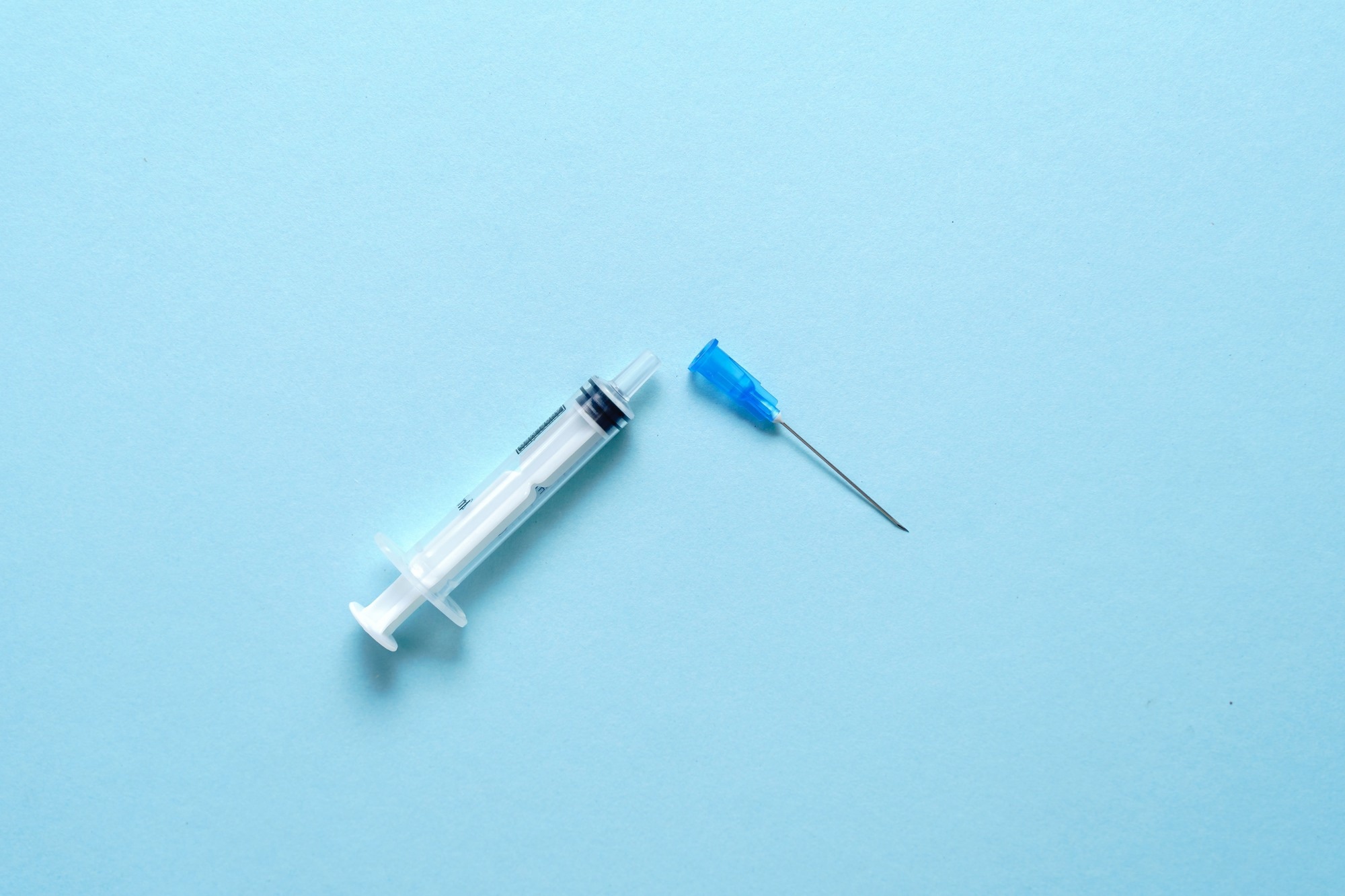A new analysis reveals how the pandemic’s vaccine triumphs also amplified distrust, showing that future progress depends on trust, governance, and equity as much as science.

Commentary: Pandemic paradox: How the COVID-19 crisis transformed vaccine hesitancy into a two-edged sword. Image Credit: Troyan / Shutterstock
In a recent commentary published in the journal Human Vaccines & Immunotherapeutics, researchers examined how coronavirus disease 2019 (COVID-19) vaccination successes coincided with rising hesitancy, quantified links between baseline acceptance and booster uptake, and outlined evidence-based strategies to restore confidence.
Background
In 2025, the United States (U.S.) logged its highest measles tally since elimination, 1,309 cases, reminding families that old threats return quickly when vaccination slips. COVID-19 vaccines, built in record time to tame severe acute respiratory syndrome coronavirus 2 (SARS-CoV-2), saved lives and reopened economies. Yet evolving guidance, online misinformation, and long-standing inequities blurred confidence.
Social media turned conspiracy theories about genetic alteration and population control into wildfire; politics reframed community protection as a loss of freedom. Culture, religion, affordability, and psychological factors like death anxiety and paranoia further shaped choices at the clinic.
Understanding how trust, access, structural barriers, and communication interact across settings is essential. Further research is needed to guide durable, fair immunization.
About the analysis
The researchers conducted a cross-national analysis to test whether early vaccine receptivity translated into stronger adherence to boosters. Countries were grouped by baseline acceptance using a 23-nation survey in 2022; nations at or above 75% willingness to receive COVID-19 vaccines were labeled High Acceptance, and those below 75% were labeled Low Acceptance.
Cumulative dose data through July 2025 were retrieved from an open global repository and used to calculate, for each country, the ratio of booster doses to initial doses administered, yielding a continuous indicator of booster performance. An independent-samples t-test compared mean ratios across groups. Significance was assessed at p < 0.0001.
Interpretation was informed by the Health Belief Model (HBM), which frames decisions through perceived susceptibility, severity, benefits, barriers, cues to action, and self-efficacy.
Drawing on peer-reviewed evidence and surveillance, they synthesized psychological, cultural, political, and structural drivers that may moderate uptake, including social media misinformation, trust in public institutions, psychological distress, and access constraints.
Using official secondary data obtained from institutions, they required no human subjects review; ethics emphasized confidentiality, compliance with standards, and reproducibility. Ratios were preferred to raw counts to normalize for population size and program maturity, enabling like-for-like comparisons across heterogeneous settings.
Results
High Acceptance countries registered substantially greater booster uptake than Low Acceptance countries when measured by the booster-to-initial dose ratio (39.56% versus 24.99%), and the difference was highly significant (p < 0.0001).
Practically, communities that embraced first doses were more likely to return for added protection. That pattern is consistent with the HBM: where perceived benefits are clearer, barriers lower, and cues to action trusted, people sustain preventive behaviors such as timely boosters.
The pandemic’s dual legacy shaped these outcomes. On the positive side, rapid innovation, including messenger ribonucleic acid (mRNA) platforms, delivered vaccines at unprecedented speed and averted hospitalizations and deaths.
On the negative side, misinformation coursed through social networks and often outperformed public health content, amplifying fears about safety, fertility, and unproven claims. Trust eroded when recommendations changed in real time, a normal feature of emerging science often misinterpreted as incompetence or conspiracy.
Institutional signals also mattered. Reorganization of the U.S. Advisory Committee on Immunization Practices (ACIP) in 2025 drew criticism from medical societies and became a cue for doubt among some parents.
In parallel, misinformation about the measles, mumps, and rubella (MMR) vaccine’s effectiveness resurfaced. The Centers for Disease Control and Prevention (CDC) documented 1,309 measles cases across forty jurisdictions by July 15, 2025, the highest national total since elimination, clustered largely in under-vaccinated communities.
Attitudes shifted accordingly: national polling reported a drop in support for routine school vaccine requirements compared with pre-pandemic levels, even as most respondents still endorsed vaccine effectiveness.
Socioeconomic, psychological, and cultural context moderated uptake across settings. Lower-income households, communities relying on traditional medicine, individuals experiencing psychological distress, and groups facing transportation, childcare, or time costs were less likely to vaccinate.
Despite COVID-19 Vaccines Global Access (COVAX) allocations where lower-GDP countries benefited more, geographic inequities persisted, reflecting supply, cold-chain, and workforce constraints.
Religious concerns, for example, questions about ingredients like fetal cell lines or observance, affected acceptance in some faith communities. Where local leaders, clinicians, and faith figures partnered to provide accurate information and convenient access, hesitancy softened.
Evidence pointed to practical levers, including structural innovations. Communication strategies that prebunk false narratives, personalize text reminders, and reinforce social norms improved willingness to vaccinate.
Technology-enabled surveillance using artificial intelligence (AI), machine learning (ML), and long short-term memory (LSTM) models helped detect and counter misinformation.
Operational innovations like mobile clinics and conditional cash transfers (CCTs) reached underserved neighborhoods and improved coverage. Governance reforms for advisory bodies, transparent contracting, and targeted monitoring strengthened accountability.
Together, these findings suggest that the systems capable of rapid discovery must now prioritize trust, convenience, structural equity, and transparent governance to sustain booster programs and protect routine immunization.
Conclusions
Higher initial acceptance of COVID-19 vaccination predicts stronger adherence to boosters, yet durable progress hinges on trust, access, structural solutions, and clear communication as much as technology.
Public health agencies, clinicians, and community leaders should “prebunk” misinformation, provide simple, consistent guidance, and normalize boosters alongside influenza vaccination. Equity investments like mobile clinics, reliable cold chains, and CCTs must close convenience gaps. At the same time, platforms should curb false content while deploying AI and ML tools to detect emerging narratives.
Transparent governance of advisory bodies and procurement through inclusive processes can stabilize confidence and sustain routine immunization.
Journal reference:
- Ortiz-Prado, E., Suárez-Sangucho, I. A., Vasconez-Gonzalez, J., Santillan-Roldán, P. A., Villavicencio-Gomezjurado, M., Salazar-Santoliva, C., Tello-De-la-Torre, A., & Izquierdo-Condoy, J. S. (2025). Pandemic paradox: How the COVID-19 crisis transformed vaccine hesitancy into a two-edged sword. Human Vaccines & Immunotherapeutics, 21(1). DOI: 10.1080/21645515.2025.2543167, https://www.tandfonline.com/doi/full/10.1080/21645515.2025.2543167